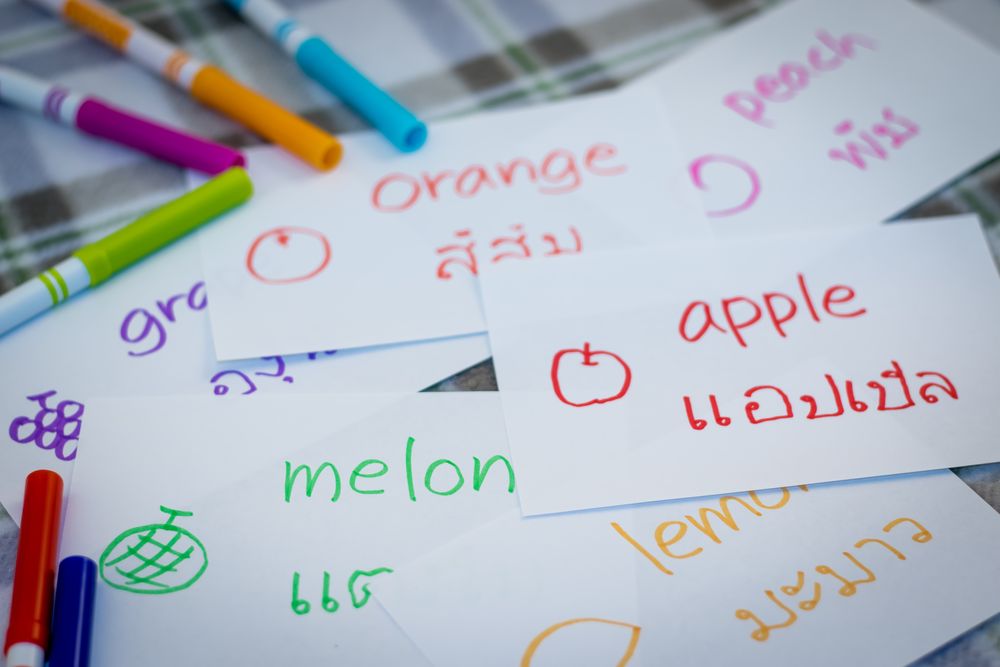Although most Thai people are fluent in English, it is always better to know the basic Thai vocabulary. Not only can this help you if you are travelling off the beaten track, but it will also allow you to interact with the locals. Learning essential phrases or simple words is particularly appreciated by Thai people. For them, it is a proof of respect and open-mindedness, but above all of the effort you make to express yourself in their language !
Here are some rules and vocabulary to help you if you travel to Thailand or decide to live there.
A complex alphabet
Influenced by the Khmer and Chinese languages, with some notions of Pali and Sanskrit, the Thai language is relatively complex. Its alphabet includes 44 consonants, 18 basic vowels and 19 diphthongs. Thai is spoken in 5 tones (neutral tone, low tone, descending tone, high tone and rising tone). In other words, the same sound can have different connotations depending on how it is pronounced. That’s why it’s easier to learn to speak some Thai than to write it.
A pronunciation to know
It is essential to know the pronunciation rules before you start learning Thai. Note that the “r” roll up (imagine you have to replace it with an “l”), and that the “ph” is pronounced “p” and not “f” since the “h” is sucked in. Finally, remember that the “aï” is pronounced “ail”.

A different courtesy formula for men and women
To show their respect, Thai people use a special form of politeness, usually used at the end of a sentence, which changes according to the gender of the speaker. While women must end their sentences with an insistent “kha”, men must use a dry and frank “khrap”. In practice, it is used to say hello (sawat dee kha or sawat dee khrap), thank you (Kop khun kha or Kop khun khrap). This form of politeness can also be used as a yes (kha or khrap) and no (may kha or may khrap).
Basic lexicon
Formulas of politeness :
- Good Morning / Good Evening / Goodbye : Sawat dee kha or khrap.
- How’s it going ? : Sabai dee mai kha khrap
- It’s going well / it’s not going well : Sabai dee / mai sabai
- Thank you : Kop khun kha or khrap
- Thank you very much : Kop khun mak kha or khrap
- Excuse me / Pardon : Kho thot kha or khrap
- I’ll see you soon : Leo phob kun mai
Useful vocabulary for eating :
- I’m hungry / thirsty : Hiou / Hiou nam
- I am a vegetarian : Khon kin dje
- Without spices : Ao maï phèt
- I’m allergic : Phom pháe
- It was delicious : A rõi
- Water : Nam
A few sentences to know :
- How much does it cost ? : tao rai khrap
- Where’s the bathroom ? : Hâwng sûam thi naï
- I would like to go… : Yàak jà pai
- Can we smoke ? : Soup bour dai mai
- What time is it ? : Kii mohng láew
If you are really serious about learning Thai here are some tips. Take classes : investing in lessons will allow you to master the basics and the phonemes and accents. Spend time with local Thai people : making friends and going out with Thai people is the easiest and most enjoyable way to learn the language. Practice as much as you can : watching videos, watching game shows or downloading useful applications to help you learn words.




Leave a comment